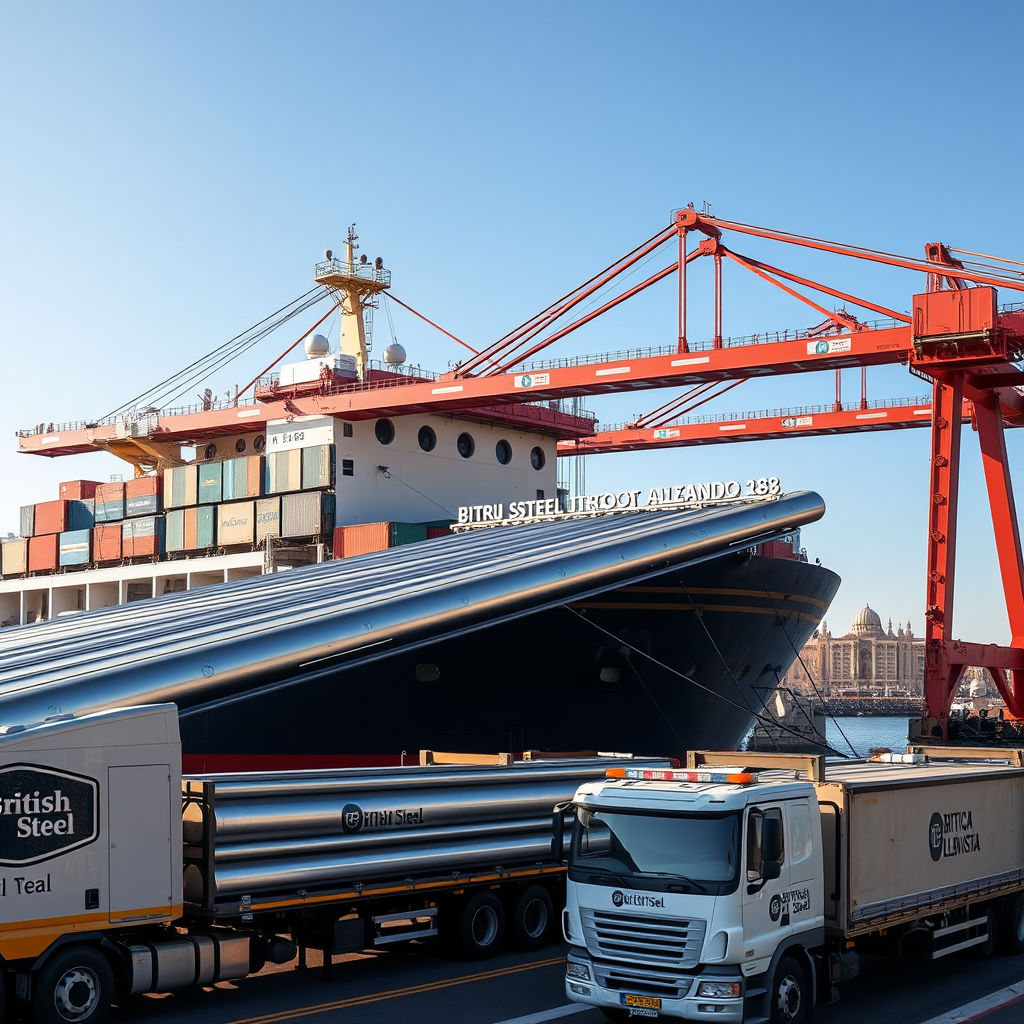British Steel Fuels Egypt’s High-Speed Rail

This article delves into the significant contribution of British Steel to Egypt’s ambitious high-speed rail network project. The project, a cornerstone of Egypt’s infrastructural modernization, involves the construction of multiple high-speed rail lines spanning vast distances across the country. This undertaking presents unique challenges and opportunities, ranging from the logistical complexities of transporting and installing vast quantities of rail track to the environmental considerations inherent in such a large-scale project. The focus will be on the specific role of British Steel in providing critical rail infrastructure, the logistical aspects of the delivery, and the broader implications of this project for Egypt’s economic development and transportation sector. We will also briefly touch upon the environmental considerations associated with high-speed rail development, highlighting the positive aspects of electrification and examining opportunities for further sustainability improvements.
British Steel’s Role in Egypt’s High-Speed Rail Network
British Steel, a company owned by China’s Jingye Group, has secured a multi-million-pound contract to supply 9,500 tonnes of 60E1 rail (grade R260) for a 660km section of Egypt’s new high-speed rail network. This section will connect Alexandria to the Mediterranean coast, the Gulf of Suez, and the Red Sea, supporting both passenger and freight trains at speeds up to 250 km/h. The delivery, scheduled for April and June 2024, involves two shipments to the Port of Alexandria. This substantial contribution underscores the importance of international collaboration in large-scale infrastructure projects and highlights British Steel’s expertise in supplying high-quality rail materials for demanding high-speed rail applications.
Logistical Challenges and Solutions
The sheer scale of the project presents significant logistical hurdles. Transporting 9,500 tonnes of rail to the Port of Alexandria requires meticulous planning and execution. This involves coordinating shipping schedules, ensuring timely delivery to meet the construction timeline, and managing potential delays related to port operations and customs procedures. Furthermore, the efficient offloading and subsequent transportation of the rail to the construction sites along the 660km route necessitates a well-defined and integrated logistics plan. The successful management of these logistical complexities is crucial to the overall success of the project.
The Broader Context: Egypt’s National Rail Development
The 660km Alexandria line forms part of a much larger, country-wide high-speed rail initiative. This broader project includes a 1,100km line connecting Cairo and Abu Simbel, and a 225km link between Luxor and Hurghada. Siemens Mobility is also involved in other aspects of construction, indicating the substantial investment and international partnerships driving Egypt’s railway modernization. This expansion will fundamentally transform Egypt’s transportation network, boosting economic activity, facilitating trade, and improving connectivity between major cities and regions. The project is being overseen by the National Authority for Tunnels (NAT) who are responsible for the design, commissioning, and operation of the new lines.
Environmental Sustainability and Future Considerations
The transition to an electrified high-speed rail network is a significant step toward environmental sustainability. Electric locomotives (compared to diesel) reduce greenhouse gas emissions and air pollution, leading to a more environmentally friendly transportation system. Further sustainability enhancements could incorporate heat recycling HVAC (Heating, Ventilation, and Air Conditioning) systems within train carriages and stations, reducing energy consumption and operational costs. This commitment to environmentally responsible practices will benefit Egypt’s environmental goals while minimizing the project’s carbon footprint. Future development could involve exploring the use of recycled materials in construction and optimizing energy consumption throughout the rail system’s lifecycle.
Conclusion
The supply of rail by British Steel for Egypt’s high-speed rail project is a significant milestone in the country’s ambitious infrastructural development. This project, encompassing a network of high-speed lines, will revolutionize Egypt’s transportation system, leading to enhanced connectivity, economic growth, and improved quality of life. The logistical challenges involved in transporting and deploying such substantial quantities of rail have been successfully addressed, highlighting the importance of well-planned logistics and international partnerships. While the project focuses on efficiency and economic gains, the emphasis on electric trains signifies a step toward more sustainable transportation. The success of this collaboration between British Steel and the Egyptian authorities demonstrates the potential for global partnerships to drive sustainable infrastructural development, and offers a model for future large-scale projects. Future improvements in environmental sustainability could include even greater integration of renewable energy sources and further efficiency enhancements in the design and operation of the rail network. The long-term impact of this project will extend beyond immediate economic benefits, significantly impacting Egypt’s sustainable development goals and fostering its position as a regional transportation hub.





